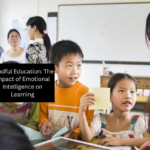Formal education has undergone many changes since the onset of the Information Revolution. Despite the changes, we have good reason to believe that language training is most efficient when it emphasizes a combination of listening, speaking, and writing. Though this is a simple assertion, the learning process is anything but simple. However, the best way to streamline learning and draw the most out of it is to acknowledge the complexity of the process and the steep learning curve it might involve.
At the same time, today, more than ever, students seem to be presented with oversimplified versions of complex topics. In fact, it is commonly believed that the learning process is reducible to certain steps, regardless of learning objectives and subject matter. This tendency to oversimplify seems to be linked with the notion that effective educators necessarily facilitate “ease of learning.”
While this might work in some contexts, an obsession with ease and simplicity only limits learning. The pressure to dilute learning curves and organic pedagogical processes is one of the most dire challenges faced by educationists today. The advent of AI has deepened the troubling tendency to seek simplifications. Though it is not wrong to try and simplify the learning process, focusing solely on simplification might limit one’s ability to understand a given concept. It is necessary to remind ourselves that having information is not the same as understanding it.
Of Shortcuts and Learning Curves
Access to information, therefore, is not the shortcut it is claimed to be. Students still have to work to understand information. Simplifying or breaking down a complex concept with Oxbridge Notes is an essential part of learning and understanding. Pre-simplified information deprives learners of the chance to break down complex information. As far as language learning is concerned, exercises such as guided reading, speaking, and writing (in fact, reading in a classroom setting is an invaluable communal experience) often hold irreplacable cues which promote ideation among students; this in turn directly improves their writing and enhances overall literacy.
For instance, students commonly hear that using and/or should be avoided in formal writing, whereas most style guides actually only recommend avoiding it in formal writing. There is, as one can see, a big difference between avoiding something altogether and being recommended to avoid something. The suggestion to avoid and/or is actually a call to use the construction mindfully and wisely. And/or is commonly found in legal documents, a prime example of formal writing. The construction is used to eliminate legal ambiguity. At the same time, a poorly used and/or can introduce ambiguity and confusion when its use is unwarranted. Learners can only understand this by examining the use of the construction in various contexts and by being encouraged to use it justifiably. Indeed, the ability to justify the use of or preference for contentious phrases or terminology should be included as a key learning outcome. Conversely, the ability to justify the omission of common phrases for less common phrases is equally important. It is the room for this dialog, for this process of questioning and justifying, that is being endangered today. Dialog, not only in the sense of spoken language training but as a form of negotiating with other speakers of a language and indeed with language itself, is thus crucial for the effectiveness of language training.
The learning curve might be steep or gentle; either way, it is the most important aspect of the learning process because it shows us the importance of trial and error.
In other words, pre-simplified information prevents students from making necessary mistakes, and without mistakes there can be no learning. In many ways, pre-simplified information found on learning apps and sites only deepen the parroting problem that has long vexed educators. Most exams and modes of assessment still value mugging up, and pre-simplified information caters to this aspect only.
Often dismissed as “time-consuming,” the process of learning through experimentation and a close study of one’s mistakes exposes students to a broad range of possibilities. Encouraging students to make mistakes and to learn from these mistakes should be our priority in an age where bite-sized learning and simplified solutions dominate educational approaches. Besides, trying to avoid the learning curve by using shortcuts and chasing simplified solutions might not only delay the achievement of expected outcomes but might be entirely counterproductive. For instance, teaching students to use grammar checkers is not the same as encouraging them to learn how to edit their work for grammar. By using proofreading software, students might be submitting relatively error-free work, but they might not know how to make their work error-free without using these services, which defeats the purpose of language learning.
Emphasizing Conversations and Fruitful Interactions
One of the biggest concerns with the digitized classroom is the reduction in human interaction and in-person conversations. While AI, if used judiciously, might enhance student productivity, the human element remains indispensable. Studies show that social interactions (in the real world) have a positive impact on students’ learning outcomes. While this is indicative of the benefits derived from physically interacting with teachers and students, it also highlights the potential impact overreliance on technological aids can have on students’ learning outcomes.
Reinforcing the importance of discussions and real interactive sessions will remain the primary challenge in a highly digitized learning environment. Other challenges include the diminishment of critical thinking and critical intuition, qualities that emerge from a sustained trial-and-error approach.
Read: Pre-Med to Med Student Tips for a Successful Transition
This might seem like a straightforward suggestion; however, it is rife with its own set of challenges. After all, there’s a reason why AI tools and technological aids in language education were created to begin with. Educators must remain aware of the challenges faced in a traditional learning setup. Often in a conversational environment, some voices tend to dominate the discourse, leaving out the introverted from expressing their opinions or learnings more freely. Striking the appropriate balance between structured learning and organic discussions is especially important in the context of traditional education. In addition, classrooms with a diverse student population also require teachers to be aware of inclusive pedagogical practices and adept enough to deploy them innovatively to improve the classroom experience. Acknowledging the challenges and possibilities the classroom presents is necessary in order to develop a holistic approach to learning that reemphasizes the importance of human interactions in the context of language learning, and indeed learning in general.
Striking a Balance and the Way Forward
This article is merely an attempt to highlight the negative consequences of overreliance on digital learning; it is not a call to do away with the digital altogether. Technological learning aids are not inherently detrimental. Autocorrect and read-aloud services can be valuable supplemental learning tools. Fostering an encouraging environment that manages to integrate the best of the traditional and the digital involves recognizing the shortcomings of both approaches and finding ways to strike a balance between them. There aren’t many generalizable guidelines for this. Teachers have to take into account the needs and dispositions of their students, their strengths and weaknesses, their habits and preferences.
To this end, educators must emphasize the fact that automated learning tools and corrective software might indeed produce error-free writing, but it might come not just at the cost of proficiency but also a basic understanding of language. The price to be paid, clearly, is quite high.
Author’s Bio:
Dennis Wesley is an independent educational researcher mainly interested in interdisciplinary practices and methods, especially ones that bridge the gap between the Humanities and STEM. He mostly writes about academia and sustainability. You can follow his personal blog here.




